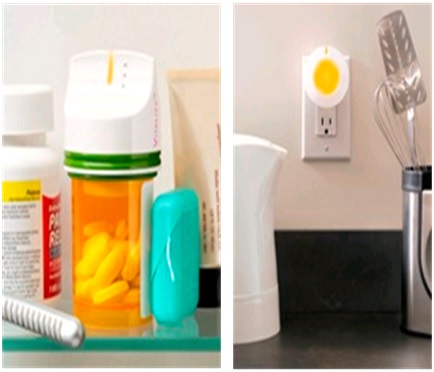
Lower Cholesterol with Patient and Physician Rewards
Organization : Center for Health Incentives and Behavioral Economics
Project Overview
Project Summary
Physicians received a financial reward for each patient who achieved his or her quarterly target cholesterol level, while patients were entered into a daily lottery for money they could only receive by taking their medication correctly.
Impact
Smaller incentives shared between patients and physicians were more effective at reducing patient cholesterol levels than larger incentives offered to either patients or physicians.
Source
Source
Challenge
Cardiovascular disease (CVD) is a leading cause of death among Americans. Statins are a low-cost medication that help people reduce the risk of CVD by managing their cholesterol levels, but many patients do not adhere to the prescribed regimen. In fact, around half of all patients discontinue their use of statins within a year. Poor medication adherence isn’t the only factor contributing to the challenge: physicians sometimes under-prescribe statins or fail to intensify therapeutic regimens (e.g., by increasing the dosage) for patients who could benefit from this kind of treatment.
Design
Primary care physicians and their patients were assigned to receive different types of incentives for meeting CVD-based health goals. The incentive structure was one of the following:
-

Vitality GlowCap bottle and transmitter
Physician incentives: physicians could receive $256 for each patient that met their quarterly cholesterol goal ($1,024 maximum annual payment).
- Patient incentives: patients were automatically entered into a daily lottery for money they could only receive if they took their statins the day before (about $2.80 per day, $1,022 maximum annual payment). Patients received a message each day indicating whether they had won, or that they could have won had they taken their statins correctly.
- Shared physician-patient incentives: both physicians and patients could receive incentives that were half the size of those in the other two conditions.
To measure statin adherence, all patients received an electronic Vitality GlowCap pill bottle. Opening the bottle triggered a message that was wirelessly sent to a web platform that could be monitored by hospital staff. While electronic pill bottles typically have other helpful features (e.g. the cap glows when a patient doesn’t take a scheduled medication), for the purposes of this study the bottles did not have any additional audio or visual reminders.
Impact
 After 12 months, this randomized evaluation found that patients in the shared physician-patient incentive group reduced their cholesterol levels by an average of 8.5 mg/dL more than patients who went about their treatment as usual, reducing their cholesterol by an average of 33.6 mg/dL compared to 25.1 mg/dL. Additionally, shared incentives increased medication adherence rates by 13 percentage points from 43% to 56%, and patients in the shared incentive program were also 11 percentage points more likely to have their medication intensified (38% versus 27%).
After 12 months, this randomized evaluation found that patients in the shared physician-patient incentive group reduced their cholesterol levels by an average of 8.5 mg/dL more than patients who went about their treatment as usual, reducing their cholesterol by an average of 33.6 mg/dL compared to 25.1 mg/dL. Additionally, shared incentives increased medication adherence rates by 13 percentage points from 43% to 56%, and patients in the shared incentive program were also 11 percentage points more likely to have their medication intensified (38% versus 27%).
Neither the patient-only incentives nor the physician-only incentives produced improvements in cholesterol levels or adherence.
Implementation Guidelines
Inspired to implement this design in your own work? Here are some things to think about before you get started:
- Are the behavioral drivers to the problem you are trying to solve similar to the ones described in the challenge section of this project?
- Is it feasible to adapt the design to address your problem?
- Could there be structural barriers at play that might keep the design from having the desired effect?
- Finally, we encourage you to make sure you monitor, test and take steps to iterate on designs often when either adapting them to a new context or scaling up to make sure they’re effective.
Additionally, consider the following insights from the design’s researcher:
- Creating more frequent lotteries that provide patients with multiple opportunities to win can improve patient engagement.
- Setting the frequency of the lottery to match that of the desired behavior may strengthen adherence rates (e.g., daily lottery for a daily medication).
- Incentives can be more motivating when the payouts are linked to marginal improvements, rather than “all-or-nothing” thresholds.
- Waiting to distribute the earned rewards if, and only if, individuals meet a goal by a certain date may strengthen an individual’s drive to achieve the goal.
- Notifying individuals who failed to take their medication, but would have won the lottery had they done so, can activate feelings of regret and motivate patients to take their medication correctly next time.
Project Credits
Researchers:
David A. Asch Contact University of Pennsylvania; Philadelphia Department of Veterans Affairs
Andrea B. Troxel Contact University of Pennsylvania
Walter F. Stewart Sutter Health System
Thomas D. Sequist Harvard Medical School
James B. Jones Sutter Health System
AnneMarie G. Hirsch Geisinger Health System
Karen Hoffer University of Pennsylvania
Jingsan Zhu University of Pennsylvania
Wenli Wang University of Pennsylvania
Amanda Hodlofski University of Pennsylvania
Antonette B. Frasch University of Pennsylvania
Mark G. Weiner Temple University School of Medicine
Darra D. Finnerty University of Pennsylvania
Meredith B. Rosenthal Harvard T.H. Chan School of Public Health
Kelsey Gangemi University of Pennsylvania
Kevin G. Volpp University of Pennsylvania; Philadelphia Department of Veterans Affairs


